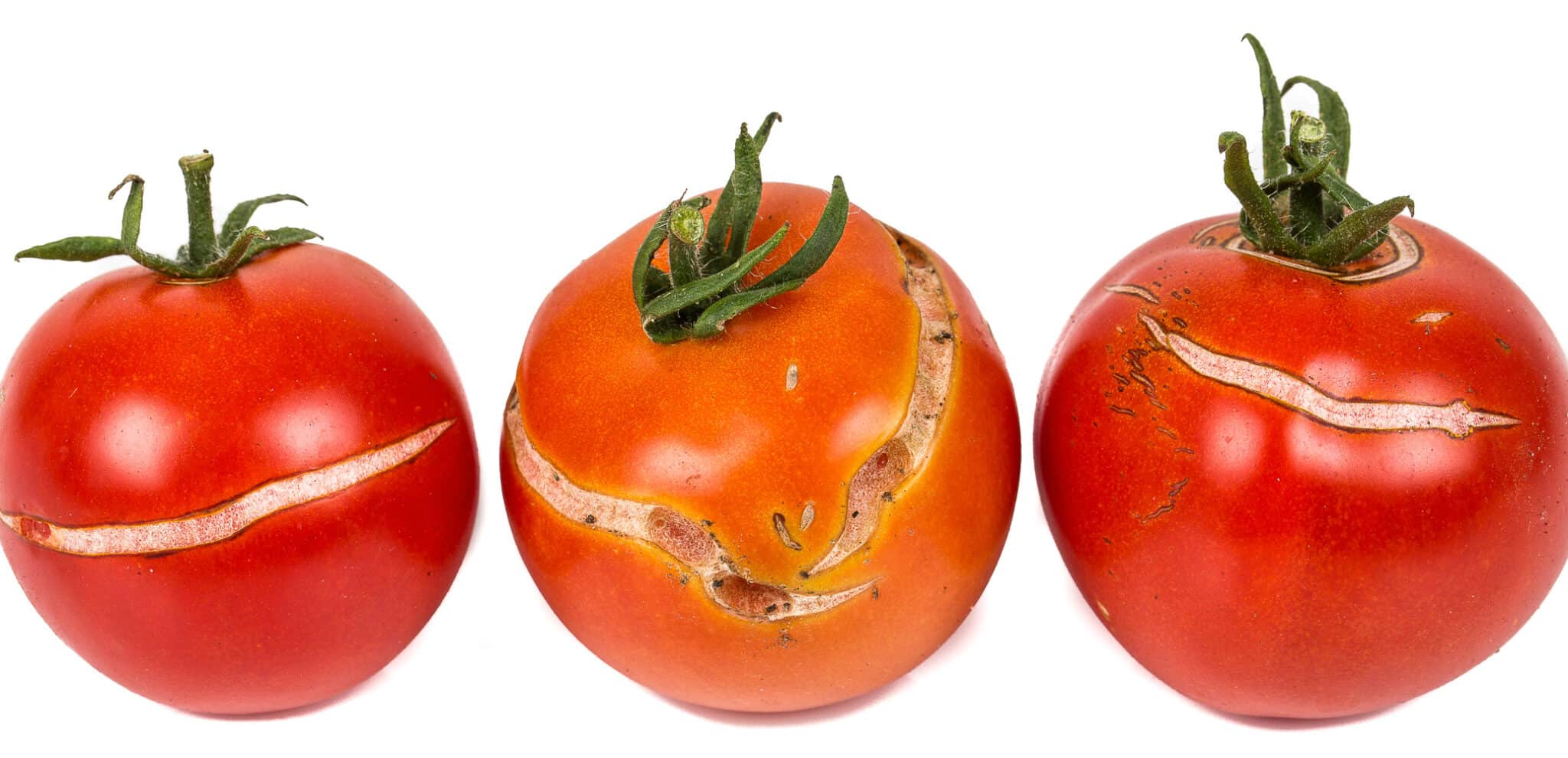Categories
Categories
Brands
Brands
Why Tomatoes Split and How To Prevent It
Posted by on

Tomatoes split or crack for several reasons, and understanding these factors can help you prevent this issue:
- Irregular Watering: One of the most common causes of tomato splitting is irregular watering. When the soil dries out and then receives a sudden influx of water, the fruit may absorb water faster than it can expand, causing the skin to crack. Consistent and even watering helps prevent this.
- Variety: Some tomato varieties are more prone to splitting than others. Certain heirloom or large-fruited varieties have thinner skins and are more susceptible to cracking.
- Overwatering: While irregular watering can cause splitting, excessive watering can also lead to this issue. Overly waterlogged soil can cause the fruit to swell rapidly, resulting in cracks.
- Weather Conditions: Weather plays a significant role in tomato splitting. Heavy rain, high humidity, and rapid temperature fluctuations can stress the fruit and lead to cracking. Inconsistent weather patterns, such as a dry spell followed by heavy rain, are particularly problematic.
- Nutrient Imbalance: An imbalance of nutrients, particularly calcium, can contribute to tomato splitting. Calcium is essential for cell wall development, and a deficiency can weaken the fruit's skin, making it more prone to cracking.
- Mature Fruit: Tomatoes that are left on the vine for too long may become overripe, causing their skin to weaken and crack. It's important to harvest tomatoes when they are at the appropriate stage of ripeness.
- Genetic Factors: Some tomato plants may have genetic predispositions to cracking. Choosing crack-resistant varieties can help mitigate this issue.
- Soil Conditions: Poor soil quality or fluctuations in soil moisture can impact fruit development. Amending your soil with organic matter and maintaining consistent soil moisture levels can help prevent cracking.
- Inconsistent Growth: Rapid growth due to sudden availability of nutrients can cause the fruit to crack. This often occurs when there's a surge of nutrients after a period of nutrient scarcity.
- Fungal Infections: Fungal diseases can weaken the skin of tomatoes, making them more susceptible to cracking. Proper plant care, including pruning for good air circulation, can help prevent fungal infections.
To prevent tomato splitting, it's important to provide consistent care, including regular watering, appropriate harvesting, soil management, and choosing suitable tomato varieties. By addressing these factors, you can reduce the risk of your tomatoes developing cracks and enjoy a better harvest.
Tomato splitting or cracking can be a common issue, but there are several steps you can take to prevent it:
- Even Watering: Maintain consistent and even watering for your tomato plants. Inconsistent watering, where the soil alternates between being too dry and too wet, can lead to cracking. Use a drip irrigation system or water deeply and regularly to keep the soil moisture consistent.
- Mulch: Apply a layer of mulch around the base of your tomato plants. Mulch helps to retain soil moisture and prevent rapid drying, which can contribute to cracking.
- Pruning: Prune your tomato plants selectively to reduce overcrowding and allow for better air circulation. Proper spacing and pruning can help reduce the chances of fungal diseases that weaken the fruit's skin, making it more prone to cracking.
- Choose Crack-Resistant Varieties: Some tomato varieties are more resistant to cracking than others. Look for varieties labeled as "crack-resistant" or "crack-tolerant" when selecting your tomato plants.
- Fertilization: Avoid excessive use of nitrogen-rich fertilizers, as they can lead to rapid growth and increase the risk of cracking. Use balanced fertilizers that provide essential nutrients in the right proportions.
- Harvest Timely: Harvest your tomatoes when they are ripe. Leaving ripe tomatoes on the vine for too long can increase the risk of cracking. Check your plants regularly for ripe fruit and harvest promptly.
- Weather Protection: If you expect heavy rain or excessive moisture, consider providing temporary overhead cover or using umbrellas to shield your tomato plants. This can help prevent excessive water absorption and cracking during rainy periods.
- Proper Ripening: Allow your tomatoes to ripen on the vine whenever possible. Tomatoes ripened on the vine tend to have thicker skin and are less prone to cracking compared to those picked green and ripened off the plant.
- Calcium Supplements: Calcium deficiencies can contribute to cracking. Ensure your plants receive adequate calcium by using calcium-rich soil amendments or foliar calcium sprays as recommended.
- Regular Inspection: Regularly inspect your tomato plants for any signs of cracking, especially after rain or irrigation. Remove any cracked fruits promptly to prevent further issues and potential fungal infections.
By following these tips and maintaining consistent care for your tomato plants, you can help minimize the risk of tomato splitting and enjoy a bountiful harvest of delicious, crack-free tomatoes.
 Loading... Please wait...
Loading... Please wait... 